Spatial mapping of innate lymphoid cells in human lymphoid tissues and lymphoma at single-cell resolution
- PMID: 40374674
- PMCID: PMC12081901
- DOI: 10.1038/s41467-025-59811-1
Spatial mapping of innate lymphoid cells in human lymphoid tissues and lymphoma at single-cell resolution
Abstract
Innate lymphoid cells (ILC) distribution and compartmentalization in human lymphoid tissues are incompletely described. Through combined multiplex immunofluorescence, multispectral imaging, and advanced computer vision methods, we provide a map of ILCs at the whole-slide single-cell resolution level, and study their proximity to T helper (Th) cells. The results show that ILC2 predominates in thymic medulla; by contrast, immature Th cells prevail in the cortex. Unexpectedly, we find that Th2-like and Th17-like phenotypes appear before complete T cell receptor gene rearrangements in these immature thymocytes. In the periphery, ILC2 are more abundant in lymph nodes and tonsils, penetrating lymphoid follicles. NK cells are uncommon in lymphoid tissues but abundant in the spleen, whereas ILC1 and ILC3 predominate in the ileum and appendix. Under pathogenic conditions, a deep perturbation of both ILC and Th populations is seen in follicular lymphoma compared with non-neoplastic conditions. Lastly, all ILCs are preferentially in close proximity to their Th counterparts. In summary, our histopathology tool help present a spatial mapping of human ILCs and Th cells, in normal and neoplastic lymphoid tissues.
© 2025. The Author(s).
Conflict of interest statement
Competing interests: The authors declare no competing interests.
Figures
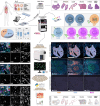
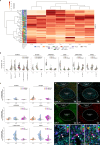



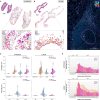


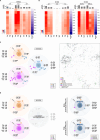
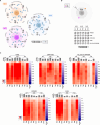
Similar articles
-
Innate Lymphoid Cells: Expression of PD-1 and Other Checkpoints in Normal and Pathological Conditions.Front Immunol. 2019 Apr 26;10:910. doi: 10.3389/fimmu.2019.00910. eCollection 2019. Front Immunol. 2019. PMID: 31105707 Free PMC article. Review.
-
Lymphoid tissue inducer-A divergent member of the ILC family.Cytokine Growth Factor Rev. 2018 Aug;42:5-12. doi: 10.1016/j.cytogfr.2018.02.004. Epub 2018 Feb 13. Cytokine Growth Factor Rev. 2018. PMID: 29454785 Free PMC article. Review.
-
Natural killer cells and type 1 innate lymphoid cells in cancer.Semin Immunol. 2023 Mar;66:101709. doi: 10.1016/j.smim.2022.101709. Epub 2023 Jan 6. Semin Immunol. 2023. PMID: 36621291 Review.
-
CD56 Expression Marks Human Group 2 Innate Lymphoid Cell Divergence from a Shared NK Cell and Group 3 Innate Lymphoid Cell Developmental Pathway.Immunity. 2018 Sep 18;49(3):464-476.e4. doi: 10.1016/j.immuni.2018.08.010. Epub 2018 Sep 4. Immunity. 2018. PMID: 30193847 Free PMC article.
-
The abundant NK cells in human secondary lymphoid tissues require activation to express killer cell Ig-like receptors and become cytolytic.J Immunol. 2004 Feb 1;172(3):1455-62. doi: 10.4049/jimmunol.172.3.1455. J Immunol. 2004. PMID: 14734722
References
-
- Artis, D. & Spits, H. The biology of innate lymphoid cells. Nature517, 293–301 (2015). - PubMed
-
- Bal, S. M., Golebski, K. & Spits, H. Plasticity of innate lymphoid cell subsets. Nat. Rev. Immunol.20, 552–565 (2020). - PubMed
-
- Spits, H. & Di Santo, J. P. The expanding family of innate lymphoid cells: regulators and effectors of immunity and tissue remodeling. Nat. Immunol.12, 21–27 (2011). - PubMed
MeSH terms
LinkOut - more resources
Full Text Sources
Medical

